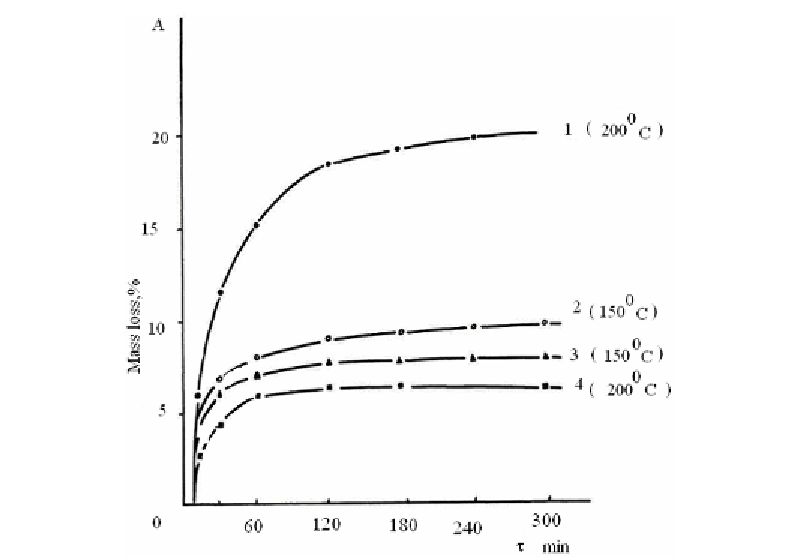Chemistry Reference
In-Depth Information
Figure 2.33. Curves of loss of mass of modified and initial cellulose diacetate under isothermal
conditions. A - loss of mass (%), τ - time (min); 1,2 - initial cellulose diacetate at temperatures 200
and 150°C respectively; 3,4 - modified cellulose diacetate at temperatures 200 and 150°C respectively.
2.9.
T
HERMO
-
AND
P
HOTOOXIDATIVE
D
ESTRUCTION OF
D
YED
P
OLYVINYL
-
A
LCOHOL
F
IBRES
Presence of considerable number of hydroxyl groups in polyvinyl alcohol (PVA) allows,
with known degree of approximation, to consider this polymer as the model of cellulose and
its derivatives.
Method of polymer materials protection by addition of low-molecular additives was used
at modification of PVA fibres which in the future well allow to proceed to investigation of
dyed materials on the basis of cellulose and its derivates with more confidence. PVA dyed by
colours LIX, LXI, LXIII and their deactivated analogs LX, LXII, LXV were used in our
work. DTA curves of PVA samples, dyed by colours LIX and LXI , and solid solutions LX
and LXI in PVA in comparison with undyed analogs are shown in Figure 2.34. It should be
noted here that dyed PVA-films do not have deep endoeffect at 120°C corresponding to the
loss of sorption moisture, unlike initial film. Endoeffect at 220°C (initial PVA), which is not
accompanied by the loss of mass and corresponding to meeting of polymer crystalline
regions, is shifted in dyed samples into region of 235-239°C. Endoeffect at 280°C (curve 1 in
Figure 2.34), characterizing the beginning of deep dehydration, is being observed in the case
of solid solution LXII and LX in PVA already at 309-310°C and in the case of colour LIX
covalently linked with PVA it is observed at 358°C, and of dyed LXI - at 341-349°C.
Destruction of DTA curves is much more visible in the range of 400-500°C, where complex

Search WWH ::

Custom Search